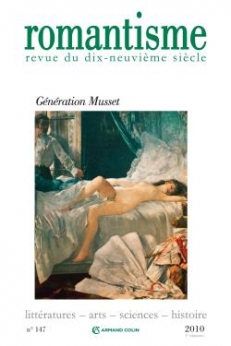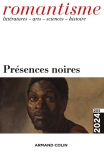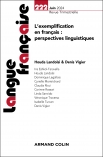
Romantisme n° 147 (1/2010)
Pour acheter ce numéro, contactez-nous
Recevez les numéros de l'année en cours et accédez à l'intégralité des articles en ligne.
Le 9 janvier 1831, Balzac écrit que le livre de Nodier appartient à « l’école du désenchantement », formule reprise par Paul Bénichou pour désigner un groupe d’écrivains, parmi lesquels Musset et Nerval. Ces deux écrivains définissent en effet un nouveau mal du siècle, différent de celui de Chateaubriand. Mais ils perçoivent aussi la grandeur de leur époque et l’intérêt d’une période d’effervescence où de nouvelles valeurs davantage liées à l’immanence peuvent être inventées. Musset, le libertin hédoniste fait de la légèreté un art de vivre et une éthique paradoxale. Nerval, le païen des temps modernes, spiritualiste et matérialiste, cherche à sauver la place du sentiment religieux. Deux réponses au désenchantement du siècle : entre Dieu et le néant, entre la fascination de l’infini et la brutalité d’un athéisme matérialiste, Musset et Nerval prennent la tangente.
On January 9th, 1831, Balzac wrote that Nodier's book belonged to “the school of disenchantment”. The phrase was later taken up by Paul Bénichou to refer to a group of writers, among which Musset and Nerval. The two writers define a new “mal du siècle”, different from Chateaubriand's. However, they can also perceive the greatness of their own time and the significance of an effervescent period when new values more closely connected to immanence remain to be invented. The hedonistic libertine Musset turns lightness into a lifestyle and paradoxical ethics. The modern times Pagan Nerval, a spiritualist and a materialist, tries to preserve the religious feeling. These are two answers to the disenchantment of the century – between God and nothingness, between a fascination for the infinite and the brutality of a materialistic atheism, Musset and Nerval dodge the issue.

